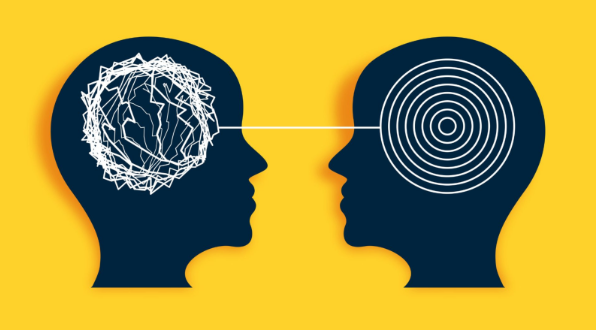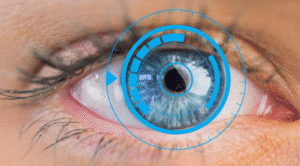Is lying a psychological phenomenon or a physiological one?
Well, the answer may vary depending on whether the respondent is a forensic psychologist or a training polygrapher. That said, there’s no denying that the motivations behind lying emanate from the brain.
Not only is the brain actively involved in formulating falsehood. It also plays the biggest role in sustaining false narratives, enabling deceptive characters to keep spinning stories to support their previous lies. Never mind that lying exerts more cognitive load than telling the truth.
Here’s an in-depth look at what brain activity reveals about deception.
What Is Lying?

Lying is the act of wilfully making false statements. The operative word is ‘wilful,’ which means that liars are conscious of their actions.
We tell lies by deliberately shunning the truth. Motivations can range from good to bad, and very ugly.
Most people lie to escape the unpleasant consequences of telling the truth. A case in point is where a guilty suspect claims innocence to avoid incarceration.
Sometimes, lies are told for the common good. For instance, you may downplay a colleague’s inefficiencies to avoid hurting their feelings.
There’s also pathological lying, which isn’t motivated by any external gain. Compulsive liars will typically spin lies to manipulate others.
A lie detector test is one of the most reliable deception-discerning techniques. While not foolproof, polygraph exams can sniff out dishonesty by analyzing an examinee’s physiological responses to the test questions.
What Happens To The Brain When We Lie?
The brain is a complex network of neurons and tissues. Findings have shown that several brain regions are involved in suppressing the truth. However, the prefrontal cortex plays the biggest role.
According to multiple brain activity studies, deception activates the prefrontal cortex. Lying particularly impacts the dorsolateral prefrontal cortex (DLPFC) and the right middle frontal gyrus.
But what exactly does this mean?
The prefrontal cortex is the part of the brain that executes complex cognitive functions. Among its roles are impulse control, truth suppression, working memory consolidation, and multi-tasking.
Lying registers on the brain as cognitive load, an existential threat that the body must immediately deal with. The prefrontal cortex goes into overdrive as it tries to concoct a falsehood, usually within seconds.
In scenarios where you have to answer multiple interconnected questions (such as polygraph testing), your prefrontal cortex would work even harder. It must suppress the truth by formulating the first lie.
Subsequent questions only arouse the region further, causing it to spin more lies so you can corroborate your story.

Lying and the Autonomic Nervous System
The autonomic nervous system (ANS) is a division of the peripheral nervous system (PNS), which regulates various physiological functions. Those include involuntary actions like blood pressure, breathing, heart rate, digestion, and perspiration.
The ANS consists of three major divisions, namely;
- Sympathetic Nervous System (SNS)
- Parasympathetic Nervous System (PNS)
- Enteric Nervous System (ENS)
Now, the sympathetic nervous system is responsible for the “fight-or-flight” responses. Conversely, the parasympathetic system controls functions related to “rest and digest.”
The enteric system is mostly involved in digestion.
Research indicates that lying triggers the autonomic nervous system, particularly the sympathetic nervous system. This causes a spike in various involuntary reactions, including those typically monitored by lie detector machines – blood pressure, heart rate, perspiration, and respiration.

The Brain And ANS – What’s The Nexus?
The brain is a part of the Central Nervous System (CNS), whereas the ANS is a division of the peripheral nervous system. However, the brain is the body’s command center.
Although the autonomic nervous system is largely involuntary, it relies heavily on signals relayed to and from the brain.
Studies have also shown that the autonomic nervous system supports cognitive functions like attention span and working memory, particularly through its SNS division. That confirms that lying involves both the brain and the ANS.
Where Do Polygraphs Come In?
Lie detector tests don’t measure brain activity. Instead, the polygraph machine tracks changes in four ANS-regulated parameters.
Even before telling a lie, we already have a perception of the truth. The brain is responsible for storing this information.
When we choose to lie, the prefrontal cortex immediately kicks in to aid the process. But it requires heightened energy levels and mental alertness to do that.
So, the prefrontal cortex instructs the ANS to activate relevant supporting functions.
Heart rate and blood pressure spikes, ramping up blood circulation to the brain to increase consciousness. Breathing also increases, so you can draw more oxygen with each inhale.
Meanwhile, a surge in skin conductivity helps flush out waste products via perspiration and keeps your skin cool through the deception.
Polygraph examiners analyze variances from your physiological baselines to infer deception.

All in the Mind: The Role of the Brain in Deception
Lying activates the prefrontal cortex of the brain, causing it to inhibit the truth and create false information. The process can happen in split seconds, which explains why lying comes so naturally to certain people.
However, we should underscore that humans are wired to tell the truth rather than engage in deception. Even pathological liars know when they’re telling falsehoods.
Also, while lying emanates from the brain, the symptoms aren’t exclusively mental or psychological. They manifest in physiological reactions like blood pressure spikes and increased skin conductivity.
Polygraph machines leverage these ANS-controlled reactions to uncover hints of deception. Although lie detector tests aren’t 100% accurate, they can come incredibly close if conducted by professional examiners following the industry’s guidelines.






